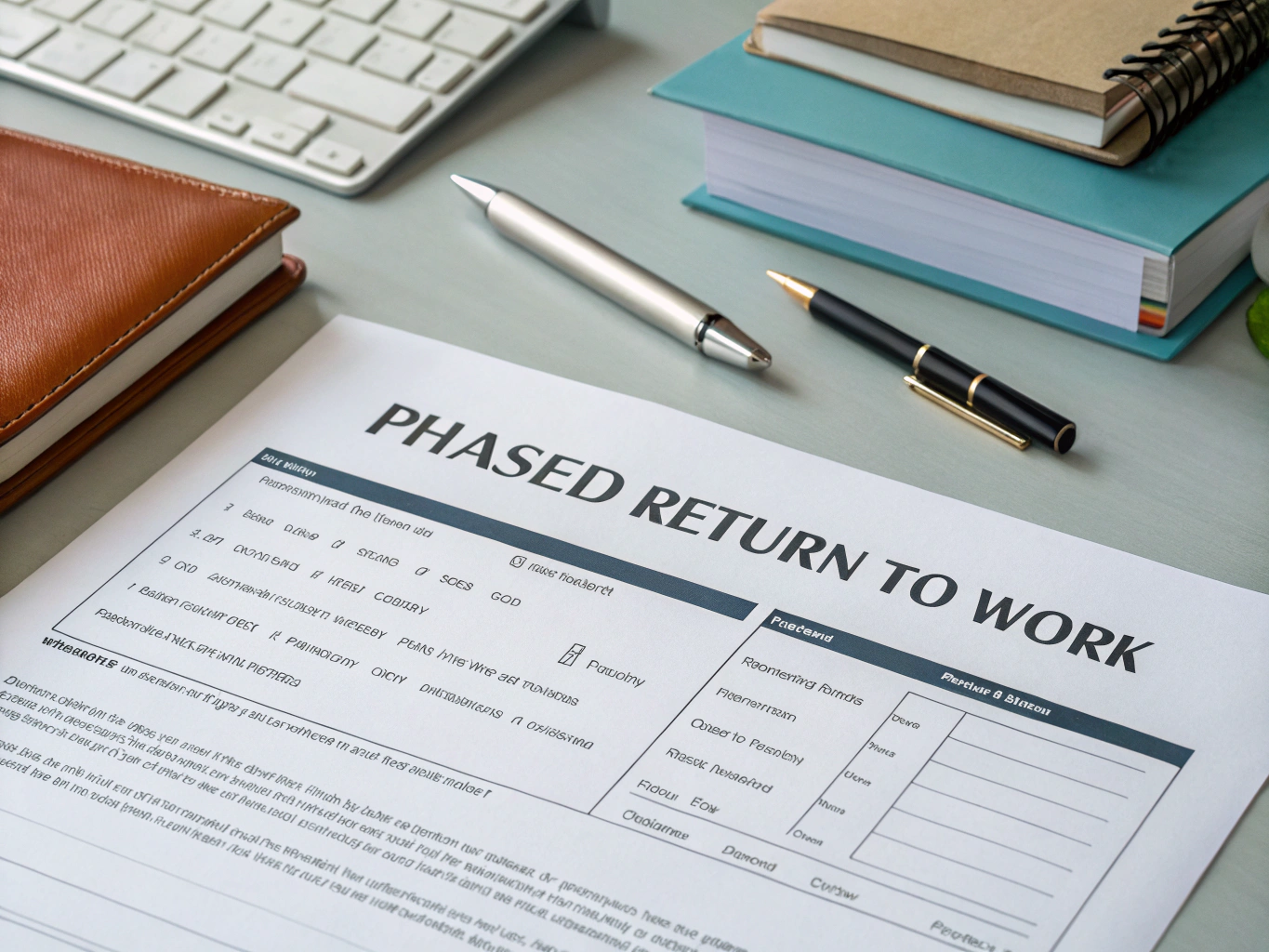What is a Phased Return To Work?
A Phased Return To Work form is a vital HR tool that facilitates a smooth transition for employees returning to their roles after an extended period of absence due to illness or injury. This form allows employees to gradually increase their working hours and responsibilities, ensuring they can adjust comfortably to their work environment. By using this form, you can create a structured plan that supports both the employee’s health and the company’s operational needs.
Template
Below is a template you can customize for your organization’s needs:
Phased Return To Work Form
Purpose and Benefits
The Phased Return To Work form serves multiple purposes, ensuring both employee well-being and organizational efficiency. Here are some of the key benefits:
- Supports Employee Health: Gradually easing back into work helps prevent overwhelming the employee, reducing the risk of burnout or re-injury.
- Enhances Productivity: A structured return schedule can help employees regain their productivity levels more effectively.
- Promotes Communication: The form encourages discussions between the employee and management about needs and expectations during the return process.
- Ensures Compliance: This documentation can help organizations comply with legal obligations regarding employee welfare.
Essential Components
When creating a Phased Return To Work form, ensure it includes the following essential components:
- Employee Information: Collecting basic details about the employee is crucial for record-keeping.
- Absence Details: Understanding the reason and duration of the absence helps tailor the return plan.
- Normal and New Working Patterns: Clearly defining the employee’s usual and adjusted hours helps manage expectations.
- Signatures: Both employee and manager signatures confirm agreement on the return plan.
How to Use This Form
To implement the Phased Return To Work form effectively, consider the following steps:
- Initial Meeting: Schedule a conversation with the employee to discuss their return and needs.
- Customize the Template: Modify the template as necessary to fit the specific situation and organizational policies.
- Monitor Progress: Regularly check in with the employee throughout their phased return to ensure they are managing well.
- Adjust as Needed: Be open to revising the return schedule based on the employee’s feedback and health status.
Legal and Compliance Considerations
When managing a phased return, it’s essential to consider relevant legal aspects, such as employee rights under labor laws and regulations concerning health and safety. Ensure that your approach complies with workplace safety laws, anti-discrimination policies, and any applicable collective bargaining agreements.
Best Practices
To maximize the effectiveness of the Phased Return To Work form, follow these best practices:
- Document Everything: Keep detailed records of all communications and agreements related to the phased return.
- Maintain Open Lines of Communication: Encourage the employee to voice concerns or needs throughout the process.
- Provide Support Resources: Offer access to counseling or wellness programs to assist the employee during their transition.




